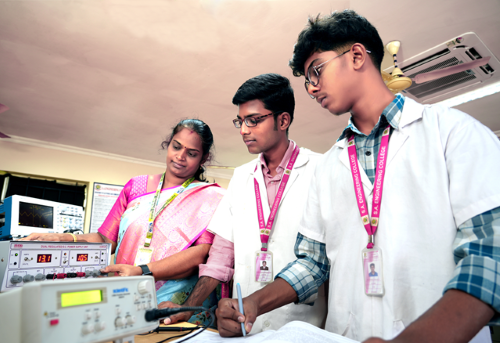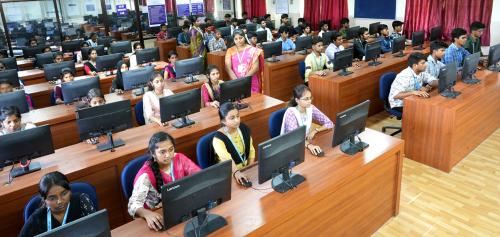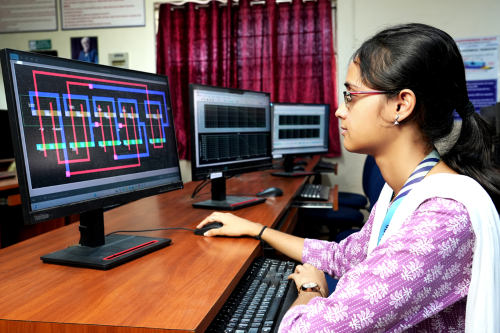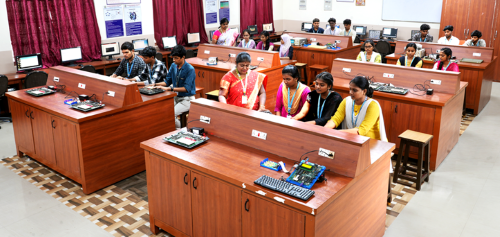Analog & Digital Circuits Lab
The Analog and Digital Circuits Lab provides hands-on experience to help students apply theoretical concepts, develop circuit design and testing skills, and understand real-world electronics applications.
Labs typically have access to a variety of components, tools, and equipment, including:
- Analog components: Transistors, resistors, capacitors, diodes, inductors, operational amplifiers.
- Digital components: Logic gates, flip-flops, counters, shift registers, memory devices.
- Test and measurement equipment: Oscilloscopes, multimeters, function generators, power supplies.
- Design and simulation tools: CAD tools, simulators, and HDL tools.
- Trainer kits: Facilitate experimentation and learning with pre-built circuits and modules.

Digital Signal Processing Lab
A Digital Signal Processing (DSP) lab provides a practical learning environment for students to explore and implement DSP concepts and algorithms. It typically involves using software like MATLAB and hardware like DSP development kits to process digital signals. Students gain practical experience in implementing DSP algorithms and understanding their behavior in real-world scenarios. Students can experiment with different computational platforms and DSP tools to implement various algorithms.

VLSI Design Lab
A VLSI (Very Large-Scale Integration) design lab is a facility that provides the tools, equipment, and resources necessary for designing and implementing Integrated Circuits. Labs offer access to Electronic Design Automation (EDA) tools such as Cadence, Xilinx Vivado, Tanner EDA tool, Microwind which are used for designing, simulating, and verifying VLSI circuits. VLSI labs provide access to hardware platforms, such as Field-Programmable Gate Arrays (FPGAs), for implementing and testing designed circuits.

Microprocessor and Microcontroller (MPMC) Lab
The Microprocessor and Microcontroller (MPMC) Lab is a practical learning environment for students in to gain hands-on experience with microprocessors and microcontrollers. The lab provides opportunities to practice assembly language programming and potentially Embedded C programming, which are essential for developing software for these devices. Students learn how to interface microprocessors and microcontrollers with various peripherals, such as sensors, actuators, displays, and communication interfaces. The lab environment facilitates the implementation of projects that demonstrate the practical applications of microprocessors and microcontrollers in various fields, such as robotics, automation, and embedded systems.

